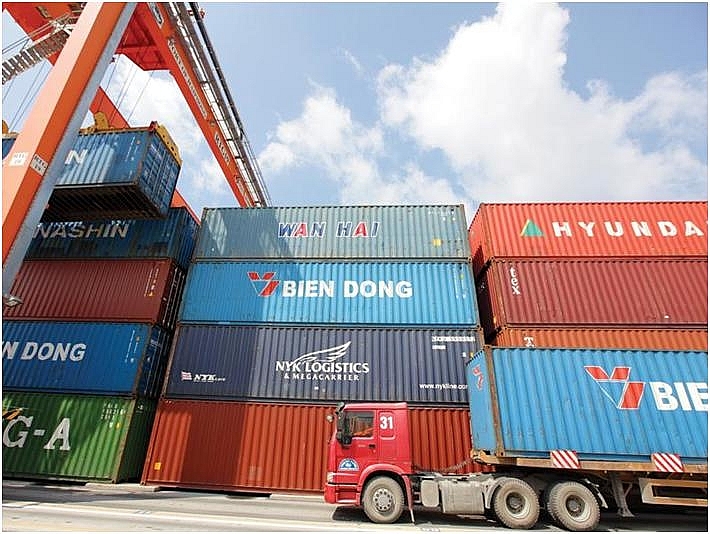What stands behind the export-import record of $475 billion
 |
| Vietnam's export-import activities have never been stronger |
2018’s economic highlights
The buzzing export-import activities were one of the most notable features of the Vietnamese economy in the past 10 months as well as the whole year.
As reported by the General Statistics Office of Vietnam, in the first 10 months, the country earned $394 billion from export-import transactions, as much as 2017’s full-year turnover. Specifically, total export revenue reached $200.27 billion and import revenue accounts for $193.84 billion, showing respective growths of 14.2 and 11.8 per cent on-year.
There are two months left of 2018, hence, the Ministry of Planning and Investment has forecast that the figure of $475 billion is well within reach. In addition to the high export-import turnover, Vietnam might hit a record in trade surplus this year.
Currently, exports have exceeded imports by $6.4 billion. Due to the usual increase of imports at the end of the year due to the shopping season for the Lunar New Year, exports usually slow down and there might be a possibility of trade deficit. However, according to the Central Institute for Economic Management (CIEM), Vietnam’s trade surplus might widen to $5 billion this year, which is the largest value so far.
In October 2017, Vietnam was forecast to reach $400 billion in export-import for the whole year. In mid-December 2017, the General Department of Vietnam Customs organised a ceremony to celebrate the revenue officially hitting $400 billion. At the end of 2017, the total trade balance was $425 billion. This year, the turnover is estimated to be $475 billion. If Vietnam can maintain this speed, the number will pass $500 billion by quite a large margin next year.
Alarms behind record figures
As the global commodity markets are wrestling with the impact of the US-China trade war and protectionism, it is particularly impressive that Vietnam could reach $475 billion in total export-import revenue, the MPI emphasised in its Report on 2018 Socio-Economic Situation.
According to the MPI, Vietnam’s exports are posting positive improvements by lowering the value of raw material exports while increasing processed and industrial products export value, following theStrategy on exports and imports for 2011-2020, with vision to 2030, paving the way for Vietnam to penetrate global production and supply chains.
On the other hand, head of the Petition Committee Nguyen Thanh Hai expressed concerns over the country’s export growth relying on global demand, while the majority of materials used to respond to this demand are imported from other countries.
“This is one of the reasons behind the low added-value, which means the country’s actual earnings are far lower,” she added.
Hai proposed the government and related authorities to work towards “more innovative solutions.”
According to Hoang Quang Ham, congressman from Phu Tho province, the inflated value of export-import brings about two issues.
First, Vietnam is generally posting a trade surplus, yet most of the gains are attributed to the FDI sector, while the domestic sector is still running a trade deficit.
“Foreign-invested companies make trade surplus, therefore, they own much of the added-value. We only take a humble part in export manufacturing, and as a result, we earn less.”
Second, as export-import value surges, the Vietnamese economy is becoming more and more open, which also means that it can easily be hurt by global economic fluctuations. Currently, the total export-import revenue in Vietnam is double the country’s GDP.
In fact, this is not the first time these concerns have been raised. Vietnam is admitted to be frail in commodity trade, due to the heavy dependence on raw materials for importation, largely relying on the FDI sector and easily wrecked by global economic fluctuations.
One of the main concerns currently is the escalating US-China trade war. According to Ha Si Quang, congressman from Quang Tri, the trade war is an external factor that may strongly affect Vietnam because both parties are top export-import markets for Vietnam.
Thus Vietnam needs to prepare comprehensive solutions to tackle potential negative impacts and solidify its economic base to enjoy the strong growth of trade activities in the future.
What the stars mean:
★ Poor ★ ★ Promising ★★★ Good ★★★★ Very good ★★★★★ Exceptional
Related Contents
Latest News
More News
- Vietnam eases policy approval requirements, simplifies foreign and outbound investments (December 11, 2025 | 17:53)
- Unpacking new momentum in Vietnam’s M&A market (December 10, 2025 | 09:59)
- Forum honours outstanding M&A deals, strategies, and advisory firms (December 09, 2025 | 18:22)
- Vietnam enters defining phase of M&A growth (December 09, 2025 | 17:00)
- Vietnam’s M&A market opens new opportunities amid strong economic momentum (December 09, 2025 | 15:00)
- Vietnam M&A Forum 2025: new position, new momentum (December 09, 2025 | 14:30)
- FDI in Vietnam jumps on additional capital and share purchases (December 09, 2025 | 13:56)
- VIR gathers dealmakers for M&A forum (December 08, 2025 | 17:17)
- Vietnam steps up green transformation with strong policies and rising investment demand (December 06, 2025 | 12:07)
- Listed companies honoured for information transparency (December 06, 2025 | 11:59)

 Tag:
Tag:




























 Mobile Version
Mobile Version